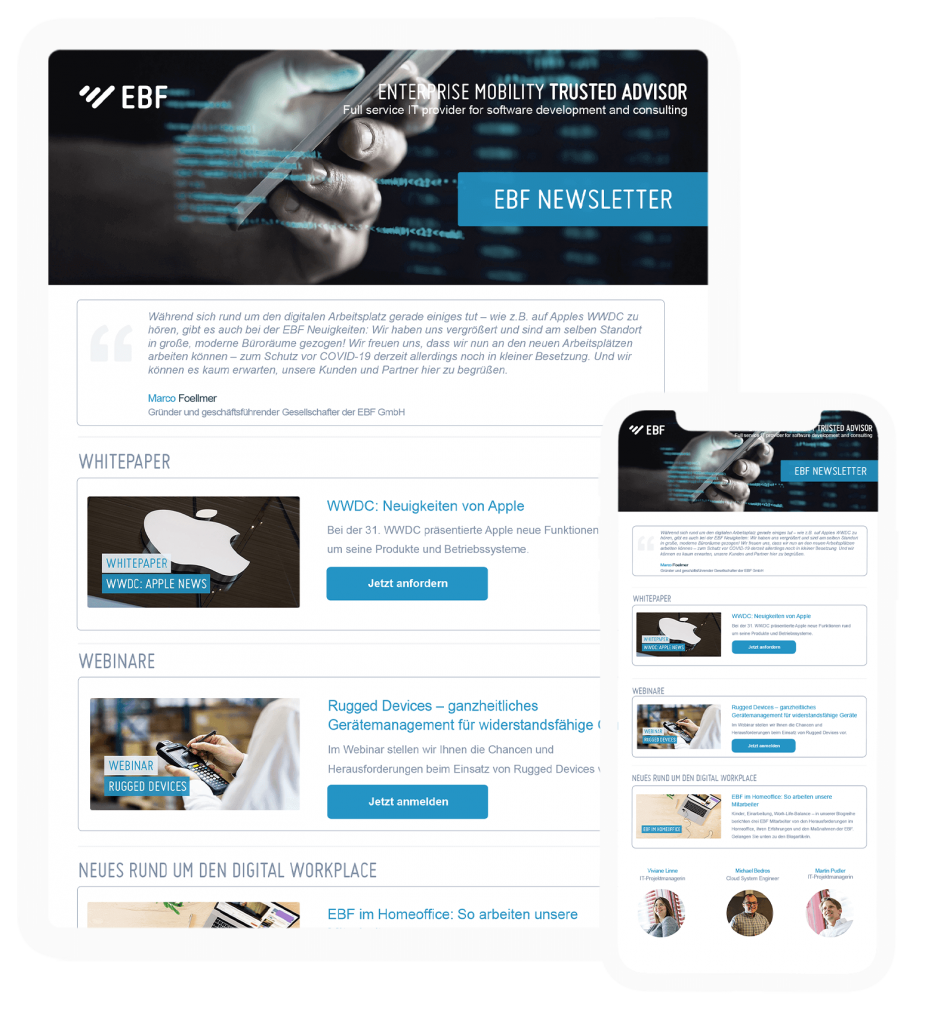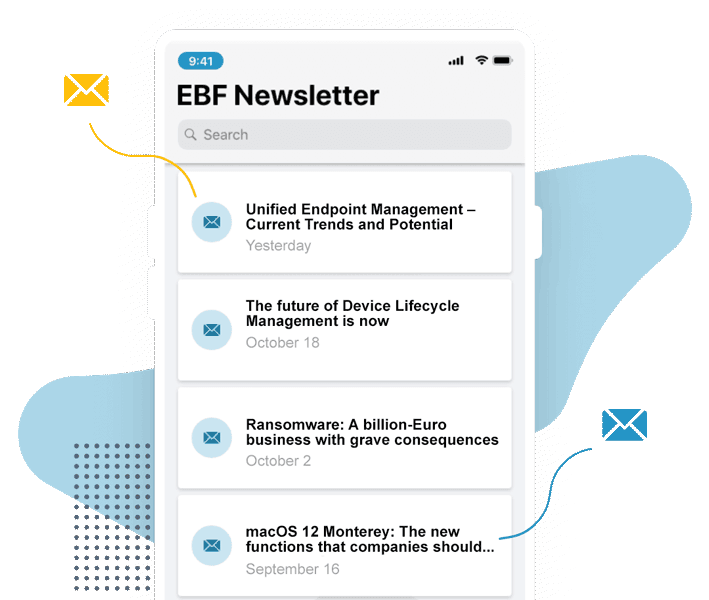The cloud trend shows no signs of abating. Companies with increased data protection requirements are also moving increasingly frequently to the cloud – part of the reason for this is that many cloud providers can now meet these heightened demands with local data centers. In addition to the global cloud, Microsoft also offers separate cloud environments that meet specified standards: these include the “Government Community Cloud” (GCC) – encompassing GCC IL4 and GCC IL5 – as well as Microsoft Azure and Microsoft 365 Cloud China.
The EBF Onboarder now also supports these cloud categories as source and target system. This allows companies that use these cloud environments to easily switch the Unified Endpoint Management system.
Why do the Microsoft national clouds exist?
It is primarily banks, insurance companies, and public authorities that must meet specific data protection and security requirements. Cloud solutions have long been regarded as unsuitable for them, as these could not provide the requisite level of data protection. This is why they were unable to benefit from the advantages of the cloud, such as lower costs, increased flexibility, a high level of scalability, and reduced pressure on their own infrastructure.
However, the situation looks different today. Microsoft has reacted to the requirements and established local data centers with an appropriate level of protection. These include the following Microsoft cloud environments:
- US Government Community Cloud, which meets the requirements of US government authorities, including:
- GCC IL4: Impact Level 4 (GCC High)
- GCC IL5: Impact Level 5 (Department of Defense), which can also be used by the Department of Defense
- Microsoft Azure and Microsoft 365 Cloud China, operated by 21Vianet in China
The national cloud environments are isolated, geographically restricted, and operated by local teams. Each national cloud is unique and displays differences – when registering applications, retrieving tokens, and calling up the Microsoft Graph API, for example.

Automated UEM system switching from and to various Microsoft cloud environments
As systems and requirements continue to develop, it may be necessary to switch the UEM system used for device management. This poses significant challenges for companies.
Challenges that are solved by the EBF Onboarder: the EBF Onboarder is a tool that automates the migration from one UEM system to another – regardless of whether the source and target system come from the same manufacturer or from different ones – and thereby provides significant benefits for companies, IT, and users. Thanks to the solution, migration projects succeed in a swift and simple manner, without major effort. It provides effective communication channels and retains a clear overview.
Already today, the EBF Onboarder which is constantly being further developed serves many source and target systems – including the Microsoft Endpoint Manager. In addition to the “Global Microsoft Cloud” environment, GCC IL4 and IL5 are now supported, as are Microsoft Azure and Microsoft 365 Cloud China.

“We are delighted that more organizations – especially companies with increased data protection and security requirements – can now benefit from the advantages of the EBF Onboarder. The tool is suitable for use in minor and major projects. More than 1.8 million devices have already been successfully migrated with our solution.”
Guido Strucksberg
EBF Onboarder Product Manager
Feel free to contact us if we can support you with your migration project.













